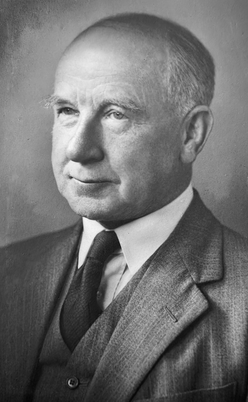Sydney Smith (forensic expert)
Sydney Smith was a prominent figure in the field of forensic science, particularly known for his pioneering work in forensic pathology and ballistics. His contributions to the field have had a lasting impact, influencing both the development of forensic methodologies and the application of forensic science in criminal investigations.
Early Life and Education[edit | edit source]
Sydney Smith was born in the late 19th century in New Zealand. From a young age, he showed a keen interest in the sciences, which led him to pursue a medical degree. After completing his medical education, Smith developed an interest in the emerging field of forensic science, which at the time was still in its infancy.
Career[edit | edit source]
Smith's career in forensic science began in earnest when he moved to Egypt in the early 20th century. It was here that he made some of his most significant contributions to the field. Working as a professor of forensic medicine, Smith was involved in numerous high-profile cases, where his expertise in determining causes of death and understanding the nuances of wound ballistics helped to solve complex criminal cases.
One of Smith's most notable contributions to forensic science was his work in developing techniques for the examination of gunshot wounds. His research and findings in this area helped to lay the groundwork for modern ballistics analysis, making it possible to more accurately link bullets and gunshot wounds to specific weapons.
Legacy[edit | edit source]
Sydney Smith's work in forensic science has left a lasting legacy. His contributions to the fields of forensic pathology and ballistics have been instrumental in advancing the science behind criminal investigations. Today, Smith is remembered as one of the pioneers of forensic science, whose work helped to establish the foundation for many of the techniques and practices used in the field today.
Selected Works[edit | edit source]
Throughout his career, Sydney Smith authored several influential texts on forensic science and pathology. These works are considered foundational in the field, providing valuable insights and methodologies for future generations of forensic scientists.
Impact on Forensic Science[edit | edit source]
Smith's impact on forensic science cannot be overstated. His innovative approaches to crime scene investigation, evidence analysis, and his development of forensic techniques have significantly contributed to the field's evolution. His work has not only aided in solving crimes but has also played a crucial role in the development of forensic science education, inspiring future forensic experts.
See Also[edit | edit source]
Search WikiMD
Ad.Tired of being Overweight? Try W8MD's physician weight loss program.
Semaglutide (Ozempic / Wegovy and Tirzepatide (Mounjaro / Zepbound) available.
Advertise on WikiMD
|
WikiMD's Wellness Encyclopedia |
| Let Food Be Thy Medicine Medicine Thy Food - Hippocrates |
Translate this page: - East Asian
中文,
日本,
한국어,
South Asian
हिन्दी,
தமிழ்,
తెలుగు,
Urdu,
ಕನ್ನಡ,
Southeast Asian
Indonesian,
Vietnamese,
Thai,
မြန်မာဘာသာ,
বাংলা
European
español,
Deutsch,
français,
Greek,
português do Brasil,
polski,
română,
русский,
Nederlands,
norsk,
svenska,
suomi,
Italian
Middle Eastern & African
عربى,
Turkish,
Persian,
Hebrew,
Afrikaans,
isiZulu,
Kiswahili,
Other
Bulgarian,
Hungarian,
Czech,
Swedish,
മലയാളം,
मराठी,
ਪੰਜਾਬੀ,
ગુજરાતી,
Portuguese,
Ukrainian
Medical Disclaimer: WikiMD is not a substitute for professional medical advice. The information on WikiMD is provided as an information resource only, may be incorrect, outdated or misleading, and is not to be used or relied on for any diagnostic or treatment purposes. Please consult your health care provider before making any healthcare decisions or for guidance about a specific medical condition. WikiMD expressly disclaims responsibility, and shall have no liability, for any damages, loss, injury, or liability whatsoever suffered as a result of your reliance on the information contained in this site. By visiting this site you agree to the foregoing terms and conditions, which may from time to time be changed or supplemented by WikiMD. If you do not agree to the foregoing terms and conditions, you should not enter or use this site. See full disclaimer.
Credits:Most images are courtesy of Wikimedia commons, and templates Wikipedia, licensed under CC BY SA or similar.
Contributors: Prab R. Tumpati, MD

